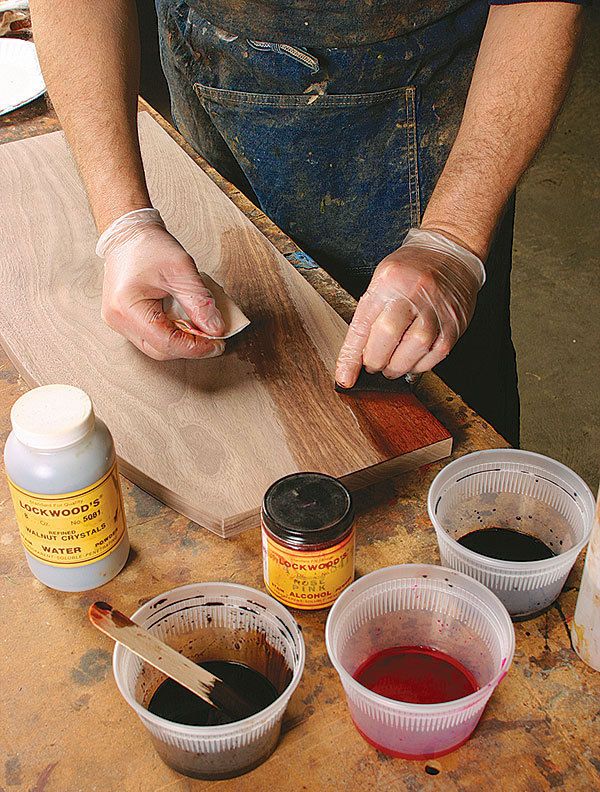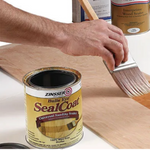
Q:
I have an attractive, wide piece of walnut that I would like to use for a small tabletop. However, it is marred by a streak of sapwood in one corner. Is there a way to conceal it without the repair looking worse than the problem?
Felix Dumas, Chicago, IL
A:
The contrast between pale sapwood and darker heartwood is an issue with both walnut and cherry. With the prices for these furniture hardwoods so high, it doesn’t make economic sense to try and exclude all the sapwood from your project. One option is to use the sapwood thoughtfully, making it part of the design. The other is to disguise it. The good news is that there’s a quick, simple, and effective way to conceal sapwood. As with all finishing, you’ll need a sample board of the same species and ideally from the same board as the workpiece, on which you can experiment.
First, wipe the workpiece and the sample board with denatured alcohol.
|
|
| The sapwood revealed. Wiping the surface with denatured alcohol reveals what the walnut’s dark heartwood and the pale sapwood will look like under a clear finish. |
This will show what the wood will look like with a clear finish and how dark you need to dye the sapwood to make it blend in with the heartwood.
Next, mix up a dye that is close to the color of the alcohol-wetted heartwood. The most inexpensive dyes are powders that dissolve in water. Sources include wdlockwood.com and woodworker.com. Don’t use pigment stains, as these will muddy the appearance of the wood. Test the color on the sapwood of the sample board and, if necessary, tweak it.
|
|
| Find the color that matches. Test dyes on a piece of scrapwood until you find the perfect match. Be sure to keep the heartwood wet so you can see the true color you are trying to match. Then apply the dye, or combination of dyes, to the actual workpiece. |
In this case, I used Lockwood’s walnut crystals for the dark brown color, but added a very small amount of rose pink to match the underlying tone in the heartwood.
If anything, err on the side of a sapwood that’s slightly darker than the heartwood rather than lighter, as the eye detects light areas more easily than darker ones. When the dye dries, it will appear much darker than the heartwood, but as soon as a clear finish is applied the two areas will blend into one and no one will know your secret.
|
|
| The sapwood concealed. A clear finish applied after the dye dries will blend the sapwood and heartwood. |
Fine Woodworking Recommended Products


Bahco 6-Inch Card Scraper

Odie's Oil


























Log in or create an account to post a comment.
Sign up Log in